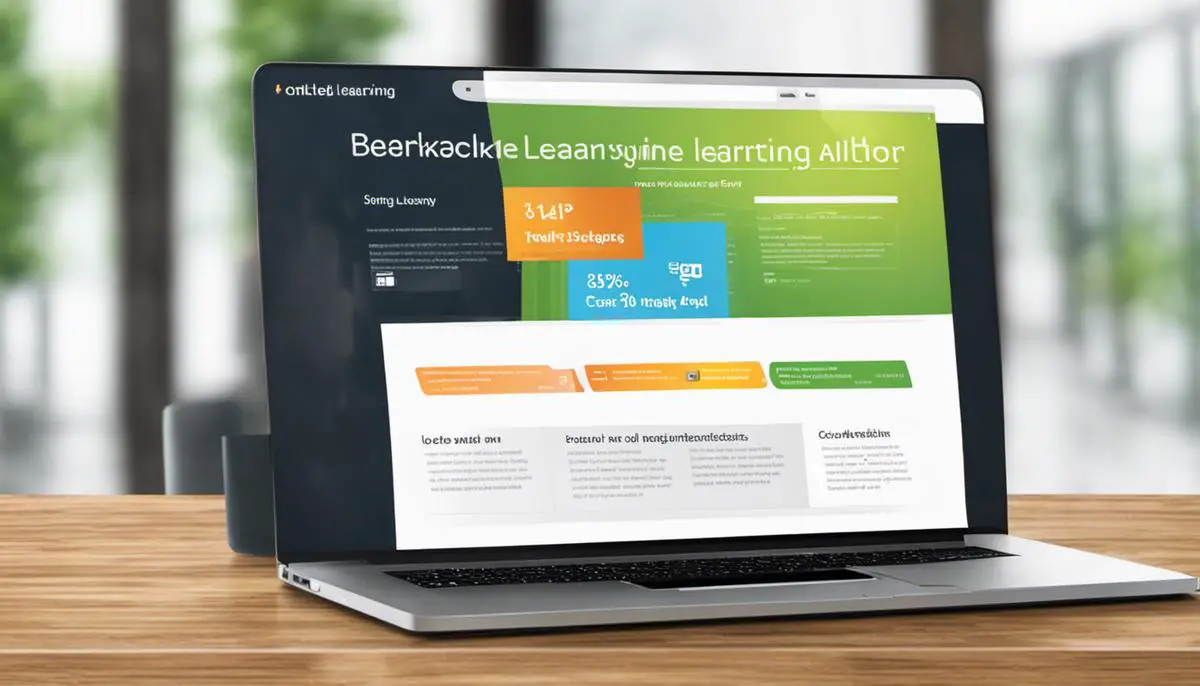Embracing the digital age, many talented individuals are harnessing the power of the internet to share their wealth of knowledge through online courses. Freelancers, in particular, are finding this a lucrative avenue to share their distinct skills and expertise. My comprehensive guide serves as a roadmap to creating successful online courses. We delve into the entire process, from planning the course content, creating and recording course material, to exploring various online platforms for publication and adopting strategies for promotion and student engagement.
Planning Course Content
Understanding the Importance of Course Content
To create a successful online course, the quality and nature of your course content remain paramount. Your course content should be unique, informative, and engaging. Unique content sets your course apart from the others offering similar material, as it brings a fresh perspective or deepens the depth of knowledge on the topic. Informative content increases the value students get from your course by adding knowledge or skills that are helpful in the real world. Engaging content keeps your students interested, reducing drop-outs and enhancing learning outcomes.
Identifying Your Target Audience
Before you start to plan out your course content, it’s essential to identify your target audience. Understanding whom you’re teaching will guide your course creation process. Keep in mind factors such as the audience’s age, educational background, existing knowledge on the topic, and their motivation to learn it. This can help you tailor the course content, style, and delivery method to suit their needs and preferences.
Defining Learning Objectives
The next step is to define the learning objectives of your course – what you intend your students to achieve by the completion of the course. Your objectives should be specific, measurable, achievable, relevant, and time-bound (SMART). They inform the course structure, content, and assessments. Having clear objectives helps stay focused on the intended learning outcomes as you develop the course.
Planning Your Course
After having set the objectives, you can now plan out your course. Start by dividing your course into distinct, manageable modules. Each module should focus on a specific aspect of the content. Within each module, plan out lessons, activities, or tasks that progress logically towards achieving the learning objectives for that particular module.
For instance, each lesson within a module should build on the previous one, gradually increasing in complexity and depth. Activities and tasks should allow your students to practice and apply the knowledge or skills gained from the lessons, reinforcing their learning and building their proficiency.
Developing Your Course Content
Once you’ve got your course framework, you can start developing your content. When crafting your content, always keep in mind the learning experience of your students. Use a mix of teaching methods such as videos, readings, quizzes, discussions, assignments, or projects to cater to all learning styles.
Try to engage your students as much as possible by making the content interactive and relevant. Incorporate real-world examples, case studies, or scenarios where possible. Provide opportunities for active learning, where students have to participate, think, or work on tasks rather than passively absorbing information.
Remember, developing an online course is an iterative process. You might need to adjust and refine your content based on feedback from your students or improvements you deem necessary. With careful planning and development, you can create an online course that educates, engages, and satisfies your students.

Creating and Recording Course Material
Exploring Options to Create and Record Course Materials
To create an online course, one of the first steps is to explore the various options for creating and recording your course materials. These could include writing a script for your video lessons, creating persuasive PowerPoint slides, recording and editing videos, testing your knowledge with quizzes, etc. Each lesson could be a mix of different formats to cater to diverse learning styles.
Writing a Script
For most individuals, the natural starting point for an online course is a script. This written document contains the content you intend to communicate in each lesson. It serves as the foundation for your course and should be detailed, clear, concise, interactive and engaging. Your script can later be transformed into slides or used as a voiceover for your video lessons.
Creating Slides
Slides as a medium to impart information are immensely popular. Use presentation software such as Microsoft PowerPoint, Prezi, Canva or Google Slides to create visually engaging slides that complement your script. Maintain consistency across slides in terms of colors, fonts, and formats. Avoid clutter and use images, diagrams, charts, and infographics strategically to aid understanding.
Recording Videos
Videos form an integral part of online courses. To record videos, you can use your smartphone, a professional camera, or screen recording software if you’re demonstrating something on your computer screen. Remember, your videos need not be elaborate. They just need to efficiently deliver the information your learners need. The key factors to consider while recording videos include your on-screen presence, eye contact with the camera, clear pronunciation, unhurried speech, and relaxed demeanor.
Improving Audio Quality
Clear and crisp audio is critical for the success of your online course. Use a professional microphone to record your voice. Consider investing in an external microphone for superior audio quality. Avoid background noise when recording and consider using software to help remove any static noise that may creep in unknowingly.
Ensuring Good Lighting
Good lighting is essential for high-quality video content. Natural lighting is best but not always possible. In such cases, consider using artificial lights. Ensure that the lighting is diffused and there are no harsh shadows on your face. Facing the light source and using additional lights to eliminate shadows can significantly improve your video quality.
Editing Your Course Content
Once you have your course materials in place, the next step is editing. Invest time in learning basic video editing techniques to produce professional-looking content. Software programs like Adobe Premiere Pro, Final Cut Pro, and even the simpler iMovie can help you trim videos, correct color and lighting, add transitions, text, music and voice-overs.
Choosing the Right Presentation Tool
Various platforms and tools are available for publishing your online course. Consider factors like content support (videos, quizzes, PDFs), interactive capabilities, analytics, pricing, user experience, customer support and reviews while choosing a platform. Some popular platforms include Udemy, Skillshare, Coursera, and Teachable.
Remember, creating an online course involves a lot of experimenting. It may take some time to find the style and tools that best suit your content. But with perseverance and the right approach, you can create an effective and impactful online course.

Choosing the Right Platform and Publishing
Choosing the Right Online Learning Platform
There are many platforms available for creating online courses, each with its own unique strengths and weaknesses. Crucial factors to consider include the platform’s user experience, the level of technical support provided, and its monetization options.
Udemy
Udemy, for instance, is a popular choice due to its ease of use, extensive user base, and extensive support resources. However, it offers limited monetization options as it regularly gives heavy discounts on courses, limiting your earnings.
Coursera
Coursera is another well-known platform, which is known for its high-quality academic courses. While it has more rigorous course requirements and only accepts teachers with certain qualifications, it does offer subscriptions which can allow for more consistent earnings.
Skillshare
Skillshare works on a royalty system. This means you earn based on the number of minutes watched in your classes each month. This platform can be highly profitable with popular courses and is highly user-friendly.
Other Platforms
Other platforms you might want to consider are Thinkific, Teachable, or Kajabi if you plan on marketing your own course. They offer more control over pricing and marketing, but they also require more effort in selling your course.
Publishing Your Course
Once you’ve chosen your platform, the next step is to upload your course. Each platform has its own technical process, so it’s important to follow the guidelines provided by the platform itself. Most will require you to upload each lesson individually, usually in a video format, though some also support audio lessons or lectures.
Your course description is crucial in attracting students. It should clearly and briefly outline what the course will cover and what students will gain from taking it. Use engaging language and highlight any unique features or aspects of your course.
Setting your course price is another critical step. This will depend on several factors, including the course content, length, and your own expertise. It may also depend on the platform’s policies or pricing structure, as some platforms have pricing tiers or membership models to consider.
Lastly, before publishing, make sure to thoroughly review your course for any errors or improvements. Then, you’re ready to hit the publish button, making your course available for students worldwide. Remember, your course publication is just the beginning – the course will need to be marketed and updated regularly to stay relevant and attractive to potential students.

Promotion and Student Engagement
Understanding the Importance of Online Course Promotion
Advertising and promoting your online courses are crucial elements to attract and reach your target learners. With the vast digital landscape, comprehension of various marketing strategies will enable you to tailer suitable tactics to your course and audience type. Understanding your target audience, who they are, where they consume information, and what they value, can aid in crafting a persuasive promotion strategy for your online course.
Email Marketing for Online Courses
One of the most effective methods of marketing is email, despite being one of the oldest digital methods. Building an email list of potential and existing students allows direct communication and updates about your course offerings. By sending regular newsletters, course-related content, or notifying about new courses can keep your audience informed and engaged. Ensure clarity and brevity in your emails, as well as a powerful call-to-action to encourage recipients to enroll in your courses.
Leveraging Social Media Marketing
Promoting your online course via social media can have a significant impact on your visibility. Platforms like Facebook, LinkedIn, Instagram, and Twitter have billions of users and offer targeted advertising features. By creating engaging posts about your course content and focusing on the benefits, you can attract potential learners. Regularly posting valuable content, interacting with comments, sharing student testimonials, and portraying some behind-the-scenes course preparation can foster trust and interest in your audience.
Content Marketing Approach
Content marketing involves creating and sharing valuable content to attract and convert prospects into students, and students into repeat learners. It can be in the form of blogs, E-books, infographics, podcasts, or webinars that offer a sneak peek into your course content. The content should be informative, engaging, and relevant to your course, and optimized for search engines to reach a wider audience.
Influencers’ Marketing
Collaborating with influencers in your course’s field can significantly boost your course’s exposure. Influencers have extensive reach and credibility with their followers and can leverage their marketing skills to promote your course. Identify influencers who align with your course theme, discuss your marketing strategy, and establish mutual partnerships.
Creating a Community and Student Engagement
Building a community and nurturing student engagement is pivotal for any online course. Usage of online forums, discussion boards, or setting up a private Facebook group for your students can foster interaction and engagement. Encourage students to ask questions, share thoughts, and network with each other for a wholesome learning experience. Engage with your students by asking for their feedback, giving them a personal shout-out, or by conducting live Q&As. This personal touch can keep students motivated and invested in your course.

This guide is designed to light the way for freelancers embarking on the journey of creating online courses. Course creation is one of the best passive income streams for freelancers. It takes you step-by-step, from crafting an engaging curriculum to technical production details, platform selection, and the intricate paths to course promotion. With dedicated diligence and consistent effort, this roadmap proposes to empower freelancers becoming impactful digital educators. Therefore, it’s important to remember that the impact of your course will not only be measured by the amount of knowledge you impart but also by the level of student engagement and the educational experience your course offers.



